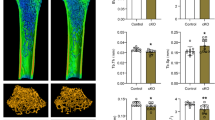Abstract
Dusp22 (dual-specificity phosphatase 22) is considered to regulate various cellular processes through the regulation of protein dephosphorylation. In this study, we prepared a specific antibody against Dusp22, anti-Dusp22, and carried out expression analyses with mouse tissues and cultured cell lines. Western blotting analyses demonstrated a tissue-dependent expression profile of Dusp22 in the adult mouse, and strongly suggested the presence of isoforms with larger molecular masses. In fibroblast NIH3T3 cells, while both endogenous and Myc-tagged Dusp22 was diffusely distributed in the cytoplasm, Myc-Dusp22 was partially colocalized with actin cytoskeleton. From the obtained results, anti-Dusp22 was found to be a useful tool for biochemical and cell biological analyses of Dusp22.



Similar content being viewed by others
Abbreviations
- Dusp:
-
Dual-specificity phosphatase
- MAPK:
-
Mitogen-activated protein kinase
- JNK:
-
c-jun N-terminal kinase
- MKK:
-
MAPK kinase
References
Patterson KI, Brummer T, O’Brien PM, Daly RJ (2009) Dual-specificity phosphatases: critical regulators with diverse cellular targets. Biochem J 418:475–489
Soulsby M, Bennett AM (2009) Physiological signaling specificity by protein tyrosine phosphatases. Physiology (Bethesda) 24:281–289. https://doi.org/10.1152/physiol.00017.2009
Schumacher MA, Todd JL, Rice AE et al (2002) Structural basis for the recognition of a bisphosphorylated MAP kinase peptide by human VHR protein Phosphatase. Biochemistry 41:3009–3017
Shen Y, Luche R, Wei B et al (2001) Activation of the Jnk signaling pathway by a dual-specificity phosphatase, JSP-1. Proc Natl Acad Sci USA 98:13613–13618. https://doi.org/10.1073/pnas.231499098
Chen AJ, Zhou G, Juan T et al (2002) The dual specificity JKAP specifically activates the c-Jun N-terminal kinase pathway. J Biol Chem 277:36592–36601. https://doi.org/10.1074/jbc.M200453200
Schwertassek U, Buckley DA, Xu C-F et al (2010) Myristoylation of the dual-specificity phosphatase c-JUN N-terminal kinase (JNK) stimulatory phosphatase 1 is necessary for its activation of JNK signaling and apoptosis. FEBS J 277:2463–2473. https://doi.org/10.1111/j.1742-4658.2010.07661
Li J-P, Fu Y-N, Chen Y-R, Tan T-H (2010) JNK pathway-associated phosphatase dephosphorylates focal adhesion kinase and suppresses cell migration. J Biol Chem 285:5472–5478. https://doi.org/10.1074/jbc.M109.060186
Li J-P, Yang C-Y, Chuang H-C et al (2014) The phosphatase JKAP/DUSP22 inhibits T-cell receptor signalling and autoimmunity by inactivating Lck. Nat Commun 5:3618. https://doi.org/10.1038/ncomms4618
Sanchez-Mut JV, Aso E, Heyn H et al (2014) Promoter hypermethylation of the phosphatase DUSP22 mediates PKA-dependent TAU phosphorylation and CREB activation in Alzheimer’s disease. Hippocampus 24:363–368. https://doi.org/10.1002/hipo.22245
Csikesz CR, Knudson RA, Greipp PT et al (2013) Primary cutaneous CD30-positive T-cell lymphoproliferative disorders with biallelic rearrangements of DUSP22. J Invest Dermatol 133:1680–1682. https://doi.org/10.1038/jid.2013.22
Sekine Y, Ikeda O, Hayakawa Y et al (2007) DUSP22/LMW-DSP2 regulates estrogen receptor-[alpha]-mediated signaling through dephosphorylation of Ser-118. Oncogene 26:6038–6049
Hanai N, Nagata K-I, Kawajiri A et al (2004) Biochemical and cell biological characterization of a mammalian septin, Sept11. FEBS Lett 568:83–88. https://doi.org/10.1016/j.febslet.2004.05.030
Mizutani Y, Ito H, Iwamoto I et al (2013) Possible role of a septin, SEPT1, in spreading in squamous cell carcinoma DJM-1 cells. Biol Chem 394:281–290. https://doi.org/10.1515/hsz-2012-0258
Inaguma Y, Ito H, Iwamoto I et al (2016) Morphological characterization of Class III phosphoinositide 3-kinase during mouse brain development. Med Mol Morphol 49:28–33. https://doi.org/10.1007/s00795-015-0116-1
Hamada N, Ito H, Nishijo T et al (2016) Essential role of the nuclear isoform of RBFOX1, a candidate gene for autism spectrum disorders, in the brain development. Sci Rep 6:30805. https://doi.org/10.1038/srep30805
Acknowledgements
This work was supported in part by JSPS KAKENHI Grant (Grant nos. 16J06511, 23590124, 16K07211 and 17K16294), a grant-in-aid of the Practical Research Project for Rare/Intractable Diseases from Japan Agency for Medical Research and Development (AMED) (17bm0804009h0201), and Takeda Science Foundation.
Author information
Authors and Affiliations
Corresponding author
Ethics declarations
Conflict of interest
The authors declare no conflict of interest.
Rights and permissions
About this article
Cite this article
Hamada, N., Mizuno, M., Tomita, H. et al. Expression analyses of Dusp22 (Dual-specificity phosphatase 22) in mouse tissues. Med Mol Morphol 51, 111–117 (2018). https://doi.org/10.1007/s00795-017-0178-3
Received:
Accepted:
Published:
Issue Date:
DOI: https://doi.org/10.1007/s00795-017-0178-3




